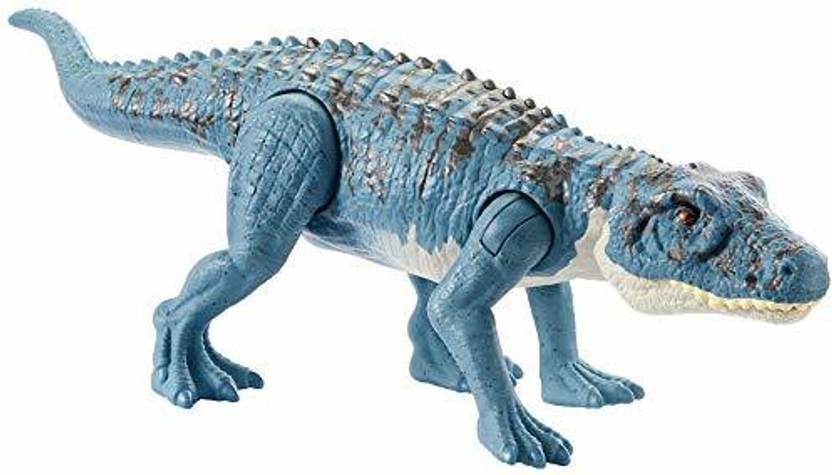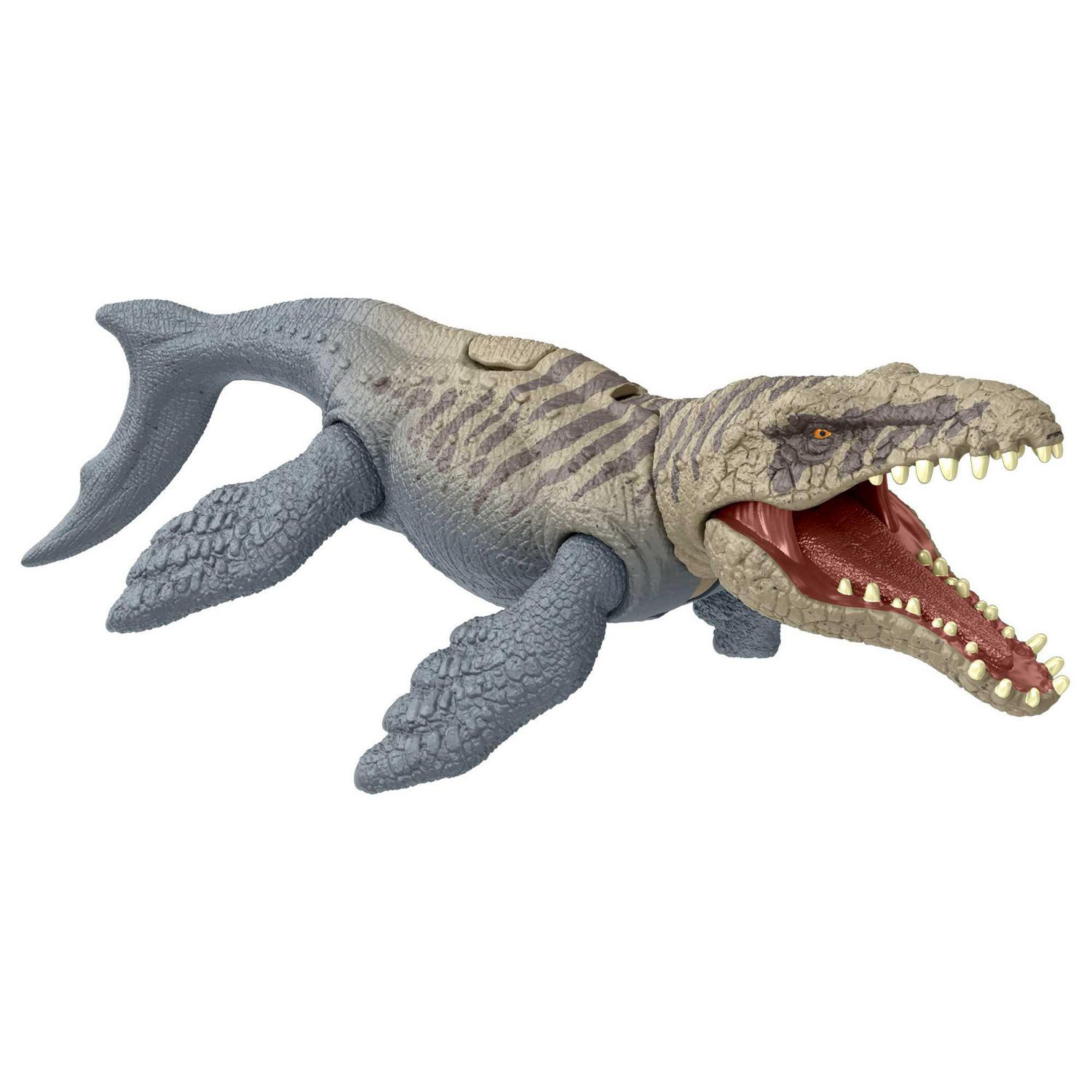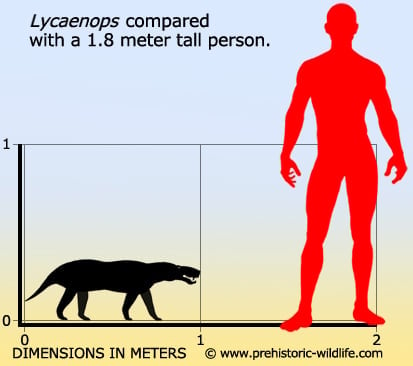@Mickey Megafauna and
@DragonNTiger, I like some of your suggestions. I do think it would be cool if the developers more non-dinosaur species to the game. Of the species you listed, the ones I would recommend include Utatsusaurus, Estemmenosuchus, Scutosaurus, Inostrancevia, Tanystropheus, Rhamphorhynchus, Edaphosaurus,
Cymbospondylus, Pliosaurus.
Some other species that could work include:
Metoposaurus, An extinct genus of stereospondyl temnospondyl amphibian, known from the Late Triassic of Germany, Italy, Poland, and Portugal. It possessed small, weak limbs, sharp teeth, and a large, flat head. This creature mainly fed on fish. Many Metoposaurus mass graves have been found, probably from creatures that grouped together in drying pools during drought. I would recommend if it gets added to the game that it should be required to live in groups. Its name means front lizard.
Mastodonsaurus, An extinct genus of temnospondyl amphibian from the Middle Triassic in Southern Germany. It belongs to a Triassic group of temnospondyls called Capitosauria, characterized by their large body size and presumably aquatic lifestyles. Mastodonsaurus remains one of the largest amphibians known, and may have exceeded 6 meters (20 feet) in length. The marked reduction of its limbs, the strong tail, and sensory grooves on the head called sulci show that Mastodonsaurus was an aquatic animal that rarely, if ever, ventured on land. Mastodonsaurus may have been completely unable to leave the water, as large quantities of bones have been found that suggest individuals died in large numbers when pools dried up during times of drought.
Grippia, A species of early ichthyopterygian found along the coasts of Greenland, China, Japan, Norway, and Sulfur Mountain Formation in Canada from the early Triassic period. The first specimen was discovered in 1929, which was the most complete specimen found for that species, but it was destroyed during a bombing raid in World War II.
Cynognathus, An extinct genus of large-bodied cynodontian therapsids that lived in the Middle Triassic. Cynognathus was a 1.2-metre (3 ft 11 in) long predator closely related to mammals and had a southern hemispheric distribution. Fossils have so far been recovered from South Africa, Argentina, Antarctica, and Namibia. The generic name Cynognathus is derived from Greek kyon and gnathos, meaning "dog jaw".
Luchibang, An extinct genus of istiodactylid pterosaur discovered in Inner Mongolia, China from the early Cretaceous period. The generic name Luchibang is derived from the Mandarin lu, "heron", and chibang, "wing", but is also a reference to the late paleontologist Lü Junchang. The specific name xingzhe means "walker", in reference to its terrestrial capabilities.
Caelestiventus, A pterosaur species found Utah during the late Triassic period. Its genus name means heavenly wind. According to Wikipedia, it is the sole example of a desert-dwelling non-pterodactyloid pterosaur and is 65 million years older than other known desert-dwelling pterosaurs.
Excalibosaurus, A genus of ichthyosaur that lived during the Early Jurassic period in what is now England. It is characterized by the extreme elongation of the rostrum, with the lower jaw about three-fourths of the length of the upper jaw, giving the animal a swordfish-like look. The holotype specimen has a skull length of 78.5 cm (2 ft 6.9 in), while the largest specimen has a skull length of 1.54 m (5 ft 1 in). The larger specimen has a total length of 6.528 metres (21.42 ft). Its name means Excalibur's lizard.

Lisowicia, An extinct genus of giant dicynodont synapsid that lived in what is now Poland during the late Triassic period. Lisowicia is the largest known dicynodont, as well as the largest non-mammalian synapsid, and is estimated to have weighed between 5–6 tons, comparable in size to modern elephants. It was also one of the last dicynodonts, living shortly before their extinction at the end of the Triassic period. Lisowicia is unique amongst dicynodonts for its erect posture, with all four limbs held upright directly under its body. This is similar to the limbs of living mammals and dinosaurs, but unlike the sprawling and semi-erect postures typical of all other dicynodonts (and indeed all other non-mammalian synapsids), and shares many independently evolved features of its limbs with large mammals.
Plotosaurus, An extinct genus of mosasaurs found in the Moreno Formation deposits along the San Joaquin Valley, California that lived during the Late Cretaceous. Unlike other mosasaurids, Plotosaurus possesses a morphology converging with those of ichthyosaurs, suggesting a much more advanced swimming adaptation than some of its close relatives. Plotosaurus possessed the highest level of aquatic adaptations in any mosasaur. It is thought to have been one of the fastest of the mosasaurs. Its name means swimmer lizard.
Kourisodon, A species of mosasaur from late Cretaceous period Vancouver Island in British Columbia, Canada and the Izumi Group of Japan. It was a small mosasaur, with an estimated length of about 3.75 meters (around 12.3 feet). Kourisodon was originally described as a member of the Leiodontini, more recently as a Clidastine.


-2018a-738x591.jpg)






-2018a-738x591.jpg)






